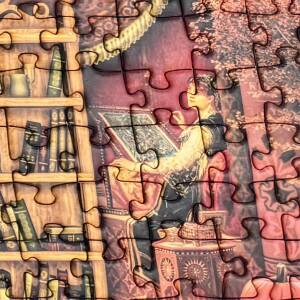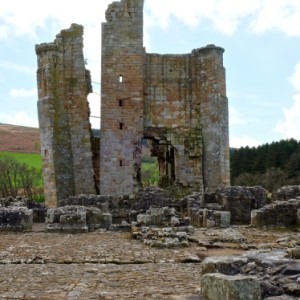All quiet now
As you drive out of Alnwick on the Rothbury road you look down on a wonderful valley with the Cheviot hills in the distance. And you can’t help but notice down below the ruins of a castle. This is Edlingham Castle. We have seen it several times, but have never thought to go to see it, until . . .
. . . yesterday Veronica said that a long while ago she was involved in archaeological work on this castle. So of course off we set this morning to explore.
Edlingham is a village in the valley and the first thing you come across is a little church (see extra). An 11th century church with Norman style arches, it was probably built on the top of an older Anglo-Saxon building. It has a large tower that was obviously built for defence during troubled times.
From the church there is a track between fields down to the Castle ruins. Until the 1960s it was thought that this was all that remained of a defensive military structure. Then excavation work by English Heritage took place and a very different picture emerged. (I assume that this was the work with which Veronica was involved – I hope she will confirm or correct this. I have added an extra picture of the castle which shows more clearly what was uncovered during excavations – I hope this is right too.)
What the ‘Castle’ actually was was a fortified manor house. It was built by John de Edlingham in 1250 as a large two storey Hall providing living space for his family. It had a moat, but in later years much more defence was needed, as this border area suffered from Scottish raids, warfare and general instability. The Hall was fortified by various means over the years and then in 1340 the magnificent Tower was added. From then on it was referred to as a castle.
My blip shows the castle, but it also shows another layer of history, as in the background is a Victorian viaduct which carried the Alnwick to Cornhill railway across the valley. This is now disused, but the viaduct still stands as a monument to the great railway age. It is thought that stones from the castle were used in the building of the viaduct – don’t know how true this is!
It is hard to imagine now that this lovely peaceful valley was once so dangerous a place that a church and a house had to be fortified and then centuries later trains trundled across. It is very quiet now!


Comments
Sign in or get an account to comment.


